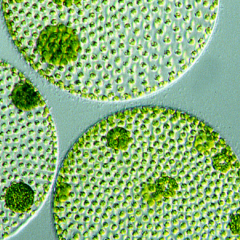New research from UQ's Institute for Molecular Bioscience (IMB) demonstrates that one of the classic examples of genetic inheritance taught in schools is wrong.
No longer is it true to say there is a single gene influencing the colour of our eyes according to IMB's Dr Rick Sturm and DNAprint Genomics' Dr Tony Frukadis in their review article published in the respected journal Trends in Genetics.
Using special DNA markers (called AIMs) to identify the genetic differences between different populations, scientists have now identified the gene sequences explaining variable eye colour in Europeans.
Dr Sturm said the concept commonly taught in schools was that brown eye colour is always dominant to blue and two blue-eyed parents always produce a blue-eyed child.
"This is simplistic and does not convey the complexities of real life. Although it is not very common, there are instances of two blue eyed parents having darker eyed children, demonstrating the interaction of several genes," Dr Sturm said.
"There is a predominant gene for blue/brown eye colour called OAC2 but it is not an absolute determinant. Many other genes influence the type of eye colour we find in the European population.
"We cannot yet fully explain the range and subtleties of eye colour," he said.
The physical basis of eye colour is determined by the distribution and pigment content of melanocyte cells (the specialised cells that produce melanin, the factor responsible for pigmentation) in the eye. Brown eyes have the same number of melanocytes as blue eyes but they produce an abundance of melanin, while blue eyes do not produce as much.
"Newborn children have blue eyes because they have not yet made much melanin, this occurs as the eyes mature during the first year of life," he said.
"The colour of our eyes, hair and skin are all linked, in that the same genes affect the production of melanin in all of these tissues, however certain genes will have more influence on one tissue than another.
"The genetics of eye colour are similar to the genetics of skin colour – darker traits tend to go together but we do see individuals with blue eyes and black hair.
"There are as many hues of eye colour as there are of skin colour but because we often simplify these traits into either light and dark or blue and brown we don't do justice to all the shades that exist in the population," Dr Sturm said.
A future application of this work may include using AIMs to develop a method to determine eye colour from a DNA sample found at crime scenes.
Eye colour, pigmentation genes and ancestry
28 Jun 2004



